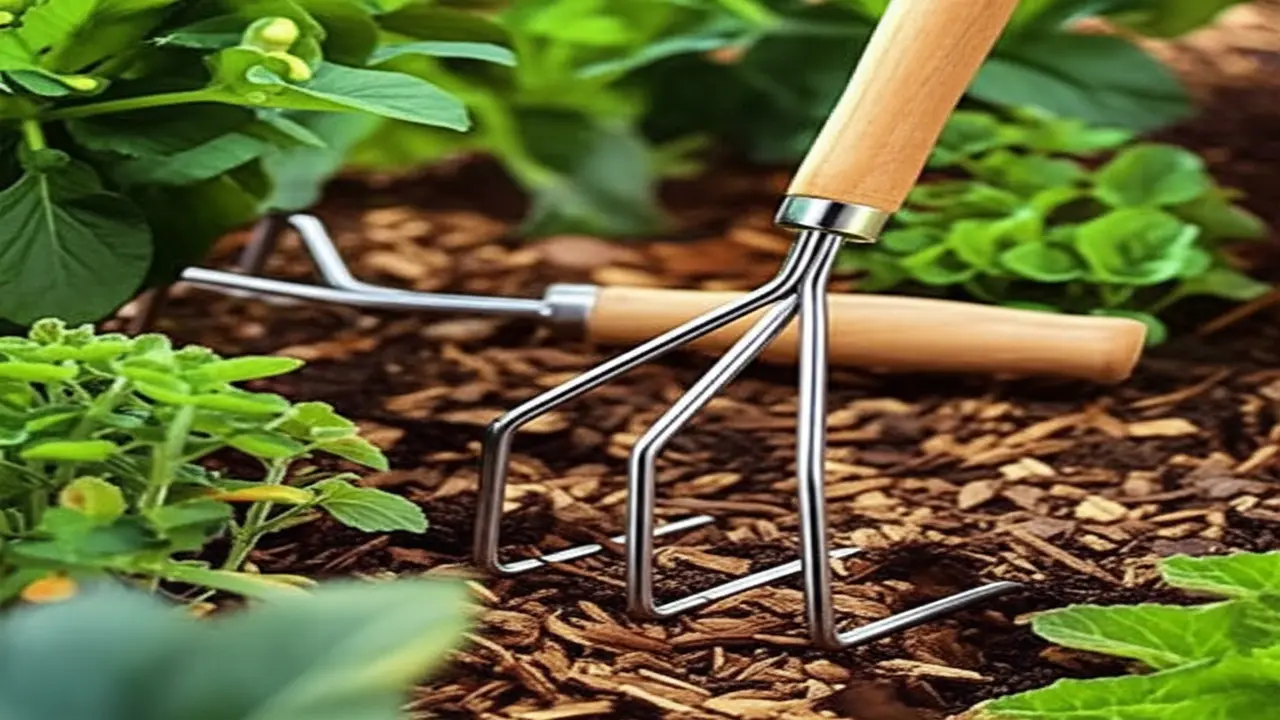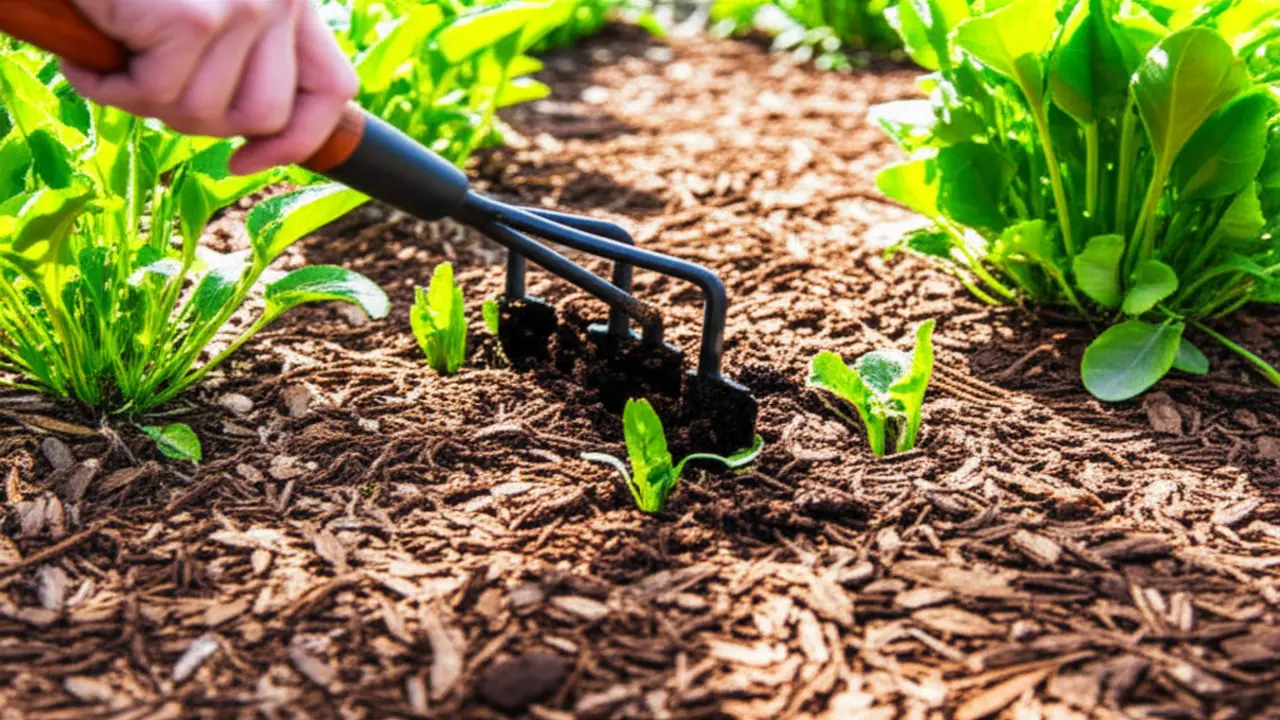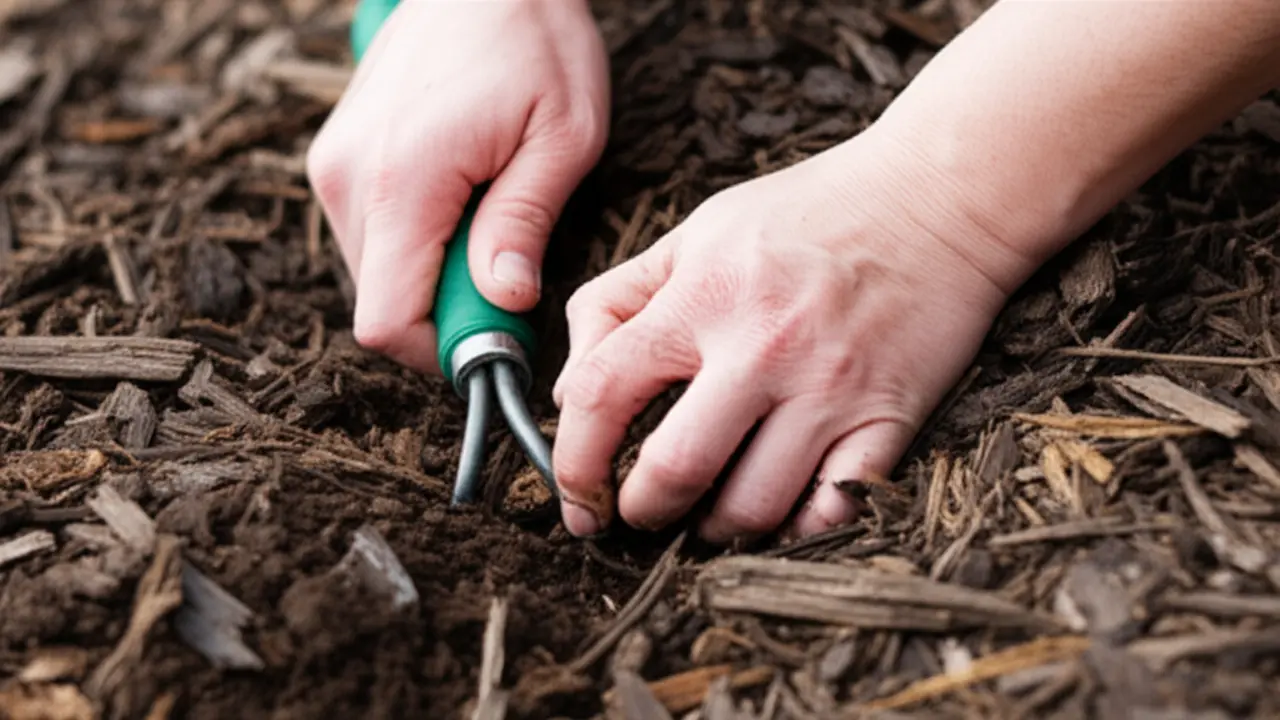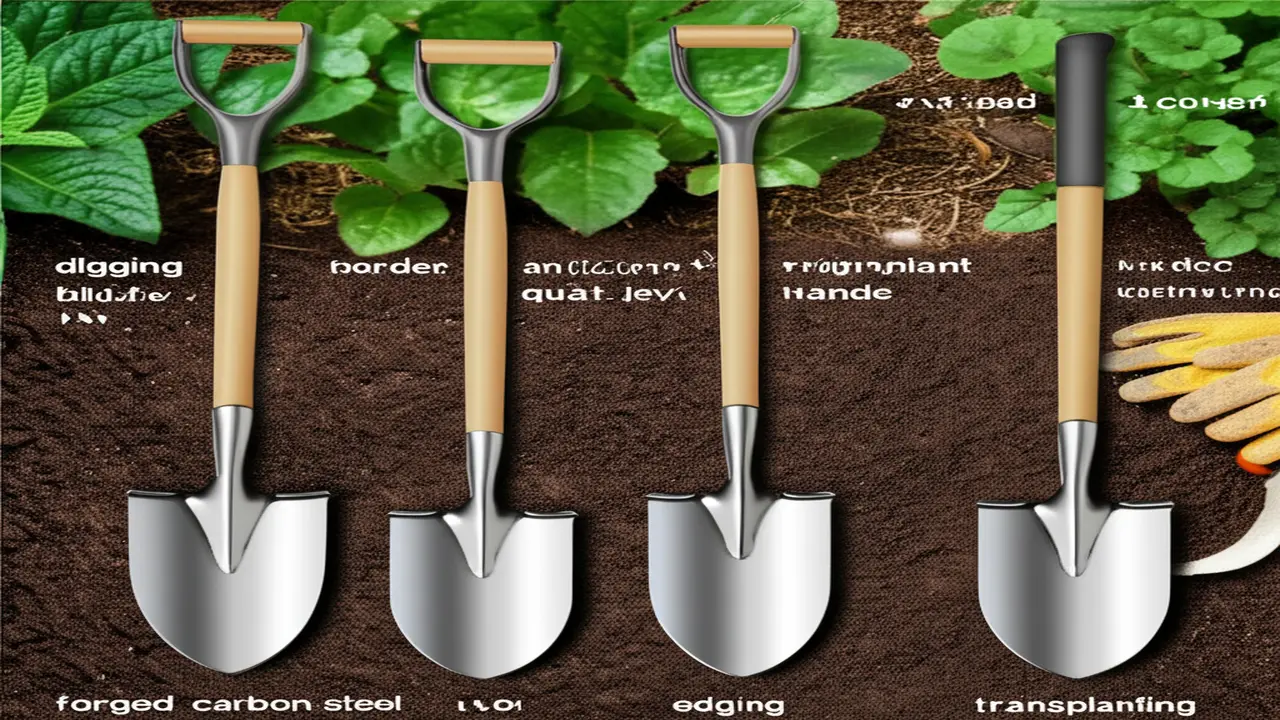Hand Cultivator Mulching: Ultimate Guide for Healthy Gardens in 2025
Understanding how to blend hand cultivator mulching techniques can fundamentally transform your gardening practice, especially as we step into 2025 with an emphasis on sustainability and precision. At its core, a hand cultivator is a manual gardening tool designed to loosen soil, remove weeds, and prepare garden beds, while mulching involves covering the soil surface with organic or inorganic materials to conserve moisture, regulate temperature, and suppress weeds.
These two elements — hand cultivators and mulching — work in concert to promote a thriving garden ecosystem. For gardeners pursuing organic methods, home cultivators dedicated to no-dig or no-till gardening, or simply anyone keen on promoting healthier soil, this comprehensive guide sheds light on their interplay and how combining them effectively supports soil vitality, water management, and weed control.
Whether you are a home gardener striving for bountiful beds, an organic grower focused on natural soil amendments, or a no-till practitioner who values minimal soil disturbance, the insights below provide expert strategies for harnessing the full potential of hand cultivator mulching.
Understanding the Benefits: Why Use a Hand Cultivator in Mulched Beds?
Employing a hand cultivator within mulched garden beds offers several precise advantages that help maintain the delicate balance of soil health and plant growth.
First, it facilitates enhanced weed control. Unlike aggressive tilling methods, hand cultivators allow for selective weeding that targets invasive plants without disturbing the mulch layer. This targeted approach protects the mulch’s protective qualities while reducing weed competition.
Second, it contributes significantly to optimized soil aeration. Soil beneath mulch can become compacted over time, which inhibits root growth and microbial activity. The careful use of a hand cultivator gently loosens the soil, fostering aeration that promotes healthy root systems.
Another critical benefit lies in improved water management. Mulch sometimes develops a crust on its surface, limiting water infiltration. Hand cultivators help break up this crust, enabling moisture to penetrate effectively and reach plant roots.
Hand cultivators also assist in enhancing nutrient cycling and organic matter integration. They allow gardeners to blend soil amendments like compost or aged manure subtly into the soil without disturbing existing mulch, maintaining soil structure while enriching fertility.
Ultimately, these practices uphold soil health maintenance by nurturing microbial populations and encouraging robust root development, which in turn reduces physical labor in the long term by keeping mulch effective and soil in optimal condition.
Choosing the Right Tool for the Job: Types of Hand Cultivators for Mulch Management
Identifying the ideal hand cultivator for your mulching needs is essential. Various designs offer different functionalities suited to specific tasks and mulch types.
The claw cultivator is excellent for working with finer mulches and loosening the soil surface without deep disruption. Its curved tines efficiently break up compacted soil just below the mulch layer, perfect for routine care in flower beds and vegetable patches.
The three-pronged cultivator provides deeper soil penetration and is useful for mixing soil amendments into the garden bed while aerating. It’s versatile enough to handle various organic mulches, making it suitable for preparing soil for planting.
A more specialized tool, the loop weeder or Dutch hoe/push-pull hoe, is designed for shallow weeding in areas with thinner mulch coverage. Its flat blade allows for easy motion that cuts weed roots just beneath the soil surface.
The Korean hand plow (Ho-Mi) serves multiple functions including weeding, digging, and planting. Its unique shape excels in precision tasks around delicate plants and tightly spaced beds.
Additionally, consider specialized cultivators with ergonomic designs or specific materials like stainless steel for durability and easier handling. Key factors when selecting include the tool’s weight, handle length, grip comfort, and the material of the tines to match your garden’s needs and your physical comfort.

Step-by-Step Applications: How to Use a Hand Cultivator for Mulching Tasks
Soil Preparation Before Mulch Application
Proper preparation lays the foundation for successful mulching. Begin by assessing soil compaction and nutrient status using simple tests or soil sampling. Use the hand cultivator to gently loosen compacted soil, incorporating compost or other organic amendments evenly to create a rich, friable seedbed. Ensure the surface is level to support uniform mulch distribution.
Effective Weed Control Through Mulch
Targeting weeds under mulch requires understanding their root depth and type. Use shallow cultivation with your hand cultivator to disturb annual weed seedlings without uprooting the mulch. For deeper perennial weeds, more precise cultivation or hand-pulling may be needed. Different mulch materials such as bark, straw, or leaves affect how aggressively you can work; lighter mulches tolerate gentler tool use while heavier mulches may require careful maneuvering to avoid disruption.

Aerating Soil Under Existing Mulch
Compaction under mulch can hinder drainage and root respiration. Detect compaction signs like water pooling or slow infiltration. Using gentle hand cultivation techniques, aerate the topsoil just beneath the mulch. This improves gas exchange and moisture penetration, typically best done in spring and fall for optimal soil and plant response.

Revitalizing and Managing Old Mulch
Over time, mulch layers may become crusted or decompose unevenly, reducing their effectiveness. Use hand cultivators to break up crusts, facilitating better water absorption. Incorporate partially decomposed mulch into the soil by gentle cultivation to enhance organic matter while preparing the bed for fresh mulch applications.
Hand Cultivators in No-Dig/No-Till Gardening
The no-dig gardening philosophy minimizes soil disturbance to preserve soil structure and ecosystem balance. Hand cultivators can still play a role here, used sparingly for targeted weeding or careful soil loosening without turning the soil over. This method supports long-term soil health and reduces erosion risks while leveraging the benefits of mulching.
Best Practices and Expert Tips for Optimal Results
For the most effective hand cultivator mulching results, work with dry soil conditions to avoid compaction risks. Focus on shallow cultivation techniques that shelter soil biology and maintain mulch integrity. Consistency is key — regular, light attention prevents the buildup of weeds and soil problems.
Maintain your tools by cleaning after use to avoid spreading plant diseases and keep them sharp to reduce exertion. Observing your garden’s specific conditions allows for customized approaches, while ergonomic tool handling minimizes physical strain on gardeners.
Common Mistakes to Avoid When Using a Hand Cultivator with Mulch
Avoid deep or aggressive cultivation that disrupts soil layers and stimulates weed seed germination. Cultivating wet soils leads to soil compaction, undoing many of your soil health efforts. Refrain from excessively disturbing mulch as this compromises its function as a protective barrier. Tools should be regularly maintained to ensure efficiency and prevent damage. Choosing the correct cultivator type for your mulching task ensures best outcomes.
When Not to Use a Hand Cultivator with Mulch (Limitations)
Hand cultivators are not suited for large-scale gardening where power tools can achieve quicker results. Coarse or rocky mulches can damage delicate cultivator tines. Additionally, gardens with sensitive root systems require minimal disturbance, making hand cultivation inadvisable. Newly laid mulch layers that remain undisturbed for maximum benefit should not be cultivated immediately.
Conclusion: The Hand Cultivator – An Indispensable Partner for Healthy Mulched Gardens
The synergy between hand cultivators and mulching offers gardeners a targeted, sustainable method to enhance soil health, control weeds, and improve water management in their gardens. By selecting the appropriate tools and applying precise techniques, you nurture your garden’s microscopic life and restore soil vitality, building a robust foundation for lush, vigorous plants.
Embracing these practices in 2025 means committing to smarter, more careful garden stewardship — a strategy that yields richer, healthier gardens while respecting the environment. Start integrating hand cultivator mulching techniques into your routine and witness your garden thrive like never before.
For further insights about advanced gardening tools, you might explore our comprehensive guide on best garden spades and how ergonomic designs can enhance your garden work efficiency.
FAQs
- What types of mulch are best suited for use with hand cultivators?
- Organic mulches like bark, straw, and leaf litter generally work well with hand cultivators. Their softness allows for gentle cultivation without significant disturbance. In contrast, heavy or coarse mulches may require different handling.
- Can hand cultivator mulching improve soil microbial activity?
- Yes, by aerating soil gently and mixing in organic amendments beneath mulch, hand cultivator use encourages beneficial microbial populations essential for nutrient cycling and soil health.
- How often should I use a hand cultivator on mulched beds?
- Frequency depends on your garden and soil type but generally, light cultivation 2-3 times per growing season is sufficient. Over-cultivating can harm soil structure.
- Is hand cultivation compatible with no-till gardening?
- Selective hand cultivation is compatible and can support no-till methods by allowing minimal soil disturbance for weeding or aeration without tilling.
- How can I prevent damaging my hand cultivator when working with mulch?
- Select cultivators designed with durable materials and use appropriate techniques based on mulch type to avoid tool damage.
For authoritative information on mulching and soil care, visit the Royal Horticultural Society and the University of California Agriculture and Natural Resources. Additionally, Garden Organic offers extensive organic gardening advice that complements mulching practices.

